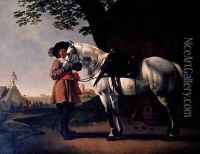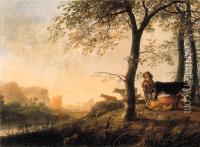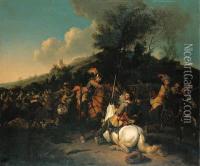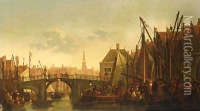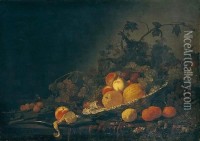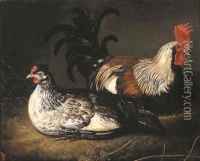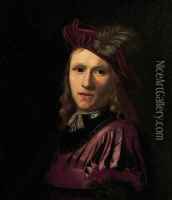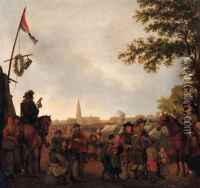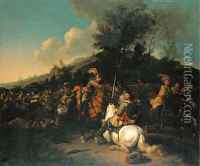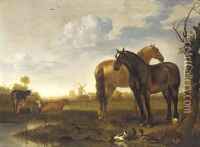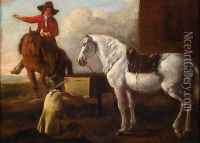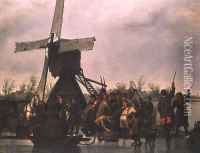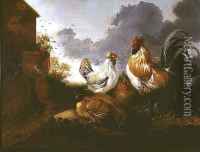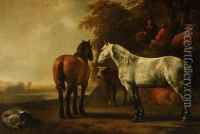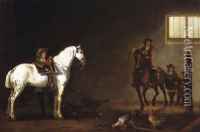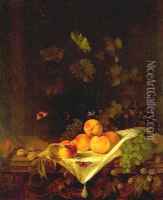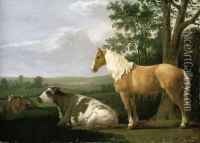Abraham Van Calraet Paintings
Abraham van Calraet, sometimes known as Abraham van Calraat or Abraham van der Calraet, was a Dutch Golden Age painter born on October 7, 1642, in Dordrecht, Netherlands. He was a contemporary of the much more famous Dutch painter Aelbert Cuyp, and his works were often mistaken for those of Cuyp because he signed his paintings with 'A.C.' which led people to think they were painted by Aelbert Cuyp.
Calraet’s training as an artist began under the guidance of his brother, the painter Barent van Calraet. It is believed that he may have also been a student or follower of Aelbert Cuyp, which would explain the similarity in their painting styles. Abraham’s works focused mainly on still lifes, landscapes, and animals, especially horses. His still lifes often depicted fruits and flowers, showcasing his ability to render these subjects with great detail and vibrancy.
Despite the confusion with Cuyp, Abraham van Calraet developed his own artistic identity, distinct in its right. His landscapes and animal scenes are characterized by a warm palette and a skillful rendering of light and shadow, which was typical of the Dutch Golden Age of painting. Calraet's paintings are now recognized for their merit and contribute to the rich tapestry of Dutch art in the 17th century.
Calraet's works have been displayed in various museums, and his contribution to Dutch art has been reassessed and appreciated over time. His paintings are held in high regard for their technical ability and for providing insight into the style and preferences of the era.
Abraham van Calraet passed away on December 11, 1722, in his hometown of Dordrecht. While he may not have achieved the same level of fame as some of his contemporaries during his lifetime, his work continues to be studied and admired by art historians and enthusiasts alike for its quality and its representation of Dutch Golden Age aesthetics.
